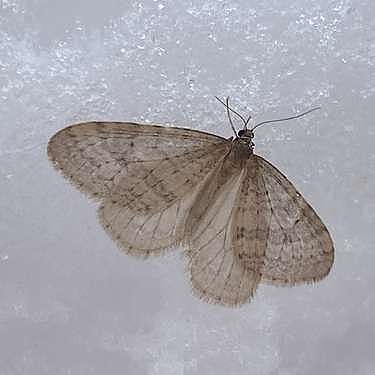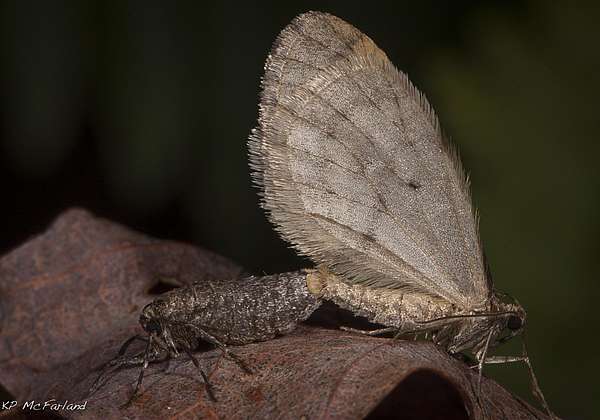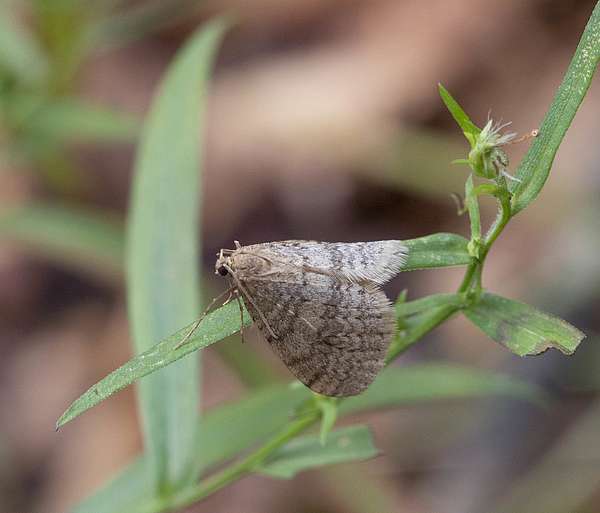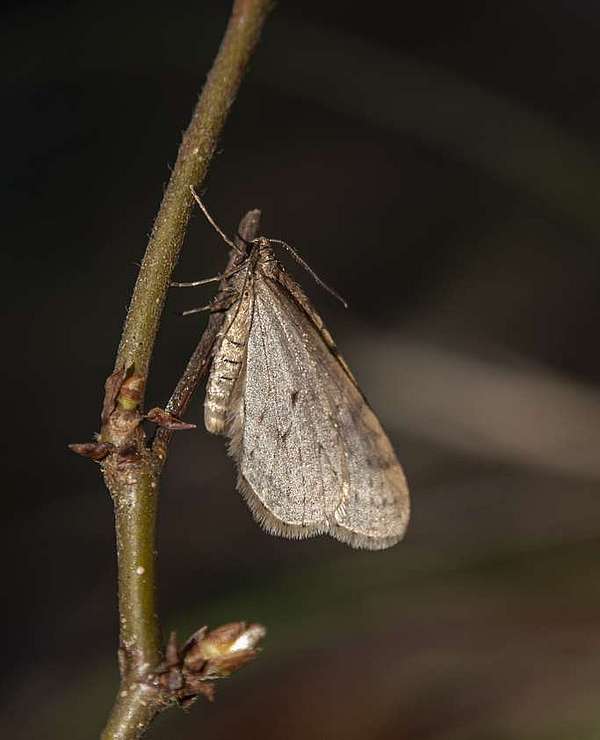by Nicole, AmeriCorps Lands & Trails Steward
In the middle of a short winter’s day, the sun shines through the bare canopy of oak and maple. The frozen Catamount Trail is crunching under my boots as I look for icy patches to avoid. A small flicker in the corner of my eye catches my attention. About the size of a quarter, there is no way it can even be the smallest of songbirds.
A small pair of brown wings stand out against a patch of fresh snow as they silently flitter. A moth? In these winter conditions? The frayed edges of its thin wings make this hearty insect seem extremely fragile.
Unlike other moths in Vermont, you can see the Bruce Spanworm Moth (Operophtera bruceata) flying around in early winter looking for a mate. I scan the forest for more movement. There! A small group of male Bruce Spanworm moths hover around a tree trunk, hoping to partner with the flightless female taking cover in the grooves of the tree bark.
Like all moths, the ectothermic Bruce Spanworm depends on environmental heat sources to kick-start its metabolism. To account for the low winter temperatures, the Bruce Spanworm moth can pump its wings efficiently due to its large wing area, strong wing muscles, and ultra-light body. Seasonal changes also trigger seasonal bodily functions inside this insect, including the production of an antifreeze solution to avoid ice formation on their body.
In Vermont’s frozen forests, parks, and backyards, the dramatic life cycle of the adult Bruce Spanworm is about to end. I continued to watch the group of precarious moths fly about. In 2024, they will not survive, but their fertilized eggs will become caterpillars, eating and growing in the tree canopy. By summer, the next generation of Bruce Spanworm will need ground leaf litter to transition from caterpillar to moth inside a chrysalis. The Bruce Spanworm, in addition to our community’s insects, birds, and amphibians, rely on a suitable amount of leaf litter for their life cycle processes and survival. Next fall, the Bruce Spanworm will reach adult stage and leave another generation of moths to travel the layers of this forest.
If you look carefully, you may be able to spot the next generation of Bruce Spanworm as a slow-moving caterpillar, a camouflaged moth, or a chrysalis. With stewardship and public recreation access of protected lands, the next generation of community members will also be able to witness this natural wonder. SLT-conserved lands provide the opportunity to see nature’s gifts, even if they happen to be brown, silent, and unassuming.



